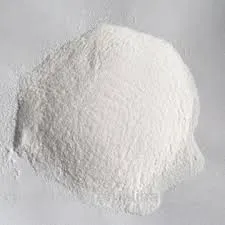
Dec . 05, 2024 07:23 Back to list
Exploring the Applications and Benefits of Hydroxypropyl Methyl Cellulose in Various Industries
Understanding Hydroxypropyl Methylcellulose CAS Number and Applications
Hydroxypropyl methylcellulose (HPMC) is a versatile and important cellulose derivative widely used across various industries, including pharmaceuticals, food, cosmetics, and construction. This article explores the significance of HPMC, its chemical properties, applications, and its identification via its CAS number.
What is Hydroxypropyl Methylcellulose?
Hydroxypropyl methylcellulose is a semi-synthetic polymer derived from cellulose, which is the main component of plant cell walls. It is created through the chemical modification of cellulose fibers with propylene oxide and methyl chloride, resulting in a compound that possesses unique properties, such as water solubility and film-forming abilities. HPMC appears as a white powder and is hygroscopic, meaning it can absorb moisture from the environment.
Chemical Structure and Properties
The chemical formula for hydroxypropyl methylcellulose varies depending on its grade, as the degree of substitution of hydroxypropyl and methoxy groups can differ. The CAS number for hydroxypropyl methylcellulose is 9004-65-3, which serves as a unique identifier for this compound in chemical databases and regulatory frameworks. Its properties, such as viscosity, gelation, and adhesive qualities, make it suitable for a plethora of applications.
HPMC is non-toxic, biodegradable, and produces a non-bacterial film that can be used in various formulations. Its water retention capability and emulsifying properties enhance its utility in diverse applications. Additionally, it is stable under a range of pH levels, which makes it suitable for use in various environments.
Applications of Hydroxypropyl Methylcellulose
1. Pharmaceuticals In the pharmaceutical industry, HPMC acts as a binding agent, film former, and filler in tablet formulations. Its controlled viscosity helps in sustaining drug release, making it an essential excipient in controlled-release drugs. Moreover, HPMC is used in the production of hydrophilic matrices and gel formulations, enhancing the bioavailability of active pharmaceutical ingredients.
hydroxypropyl methyl cellulose cas number

2. Food Industry HPMC serves as a thickening, stabilizing, and emulsifying agent in many food products. It is widely used in sauces, dressings, ice creams, and bakery goods. Its ability to retain moisture is especially beneficial in food applications, prolonging shelf life and improving texture.
3. Cosmetics Within the cosmetic industry, HPMC is used as a thickener and film-forming agent in various products, including lotions, creams, and gels. Its enhancing qualities help improve the sensory attributes of cosmetic formulations, providing a smoother and more pleasant application experience.
4. Construction HPMC is instrumental in construction materials such as cement-based adhesives and mortars. It improves workability, water retention, and consistency in these materials, ensuring better adhesion and performance. Additionally, it prevents cracking and enhances the durability of construction materials.
5. Personal Care Products In the personal care sector, HPMC is utilized in shampoos, conditioners, and other hair care products. Its conditioning properties help in maintaining moisture and improving the texture of hair.
Safety and Regulation
Hydroxypropyl methylcellulose is considered safe for use in food and pharmaceutical applications, with the FDA categorizing it as Generally Recognized As Safe (GRAS). It is also approved for use in various cosmetic products. Nevertheless, it is critical for manufacturers to adhere to guidelines regarding its use and to ensure that products containing HPMC comply with relevant regulations.
Conclusion
Hydroxypropyl methylcellulose (HPMC) is a multifaceted compound with numerous applications across various industries. Its properties, including water solubility, viscosity, and non-toxic nature, make it an essential ingredient in pharmaceutical formulations, food products, cosmetics, and construction materials. Recognized by its CAS number 9004-65-3, HPMC continues to be a vital component in enhancing product performance and consumer experience. As research and development advance, the potential applications of HPMC are likely to expand further, solidifying its role as a key ingredient in innovative formulations in the future.
-
Versatile Hpmc Uses in Different Industries
NewsJun.19,2025
-
Redispersible Powder's Role in Enhancing Durability of Construction Products
NewsJun.19,2025
-
Hydroxyethyl Cellulose Applications Driving Green Industrial Processes
NewsJun.19,2025
-
Exploring Different Redispersible Polymer Powder
NewsJun.19,2025
-
Choosing the Right Mortar Bonding Agent
NewsJun.19,2025
-
Applications and Significance of China Hpmc in Modern Industries
NewsJun.19,2025







